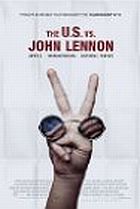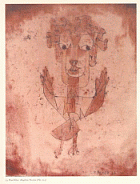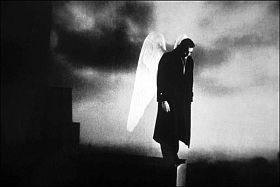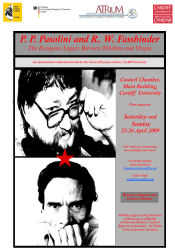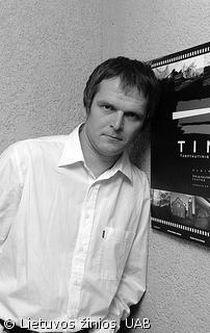Bruno Ganz og Otto Sander kommer som disse frakkeklædte engle usynlige ind til de mange læsende (Rilkes scene fra “Malte Laurids Brigges Optegnelser”) på Staatsbibliothek. De kan, da de er engle, ikke kun høre tanker, men også, hvad der læses, og blandt de mange mumlende stemmer med sætninger om livet i regnskoven, om sommeren, som lakker mod enden, om merværdiafgift, om sammenfatning af ligninger, om kærligheden, om vemod ved soldaterne ved fronten og et bygkorn i øjet (i et Alban Berg brev), om DNA molekylet… skelner jeg:
“Walther Benjamin købte 1921 Paul Klees akvarel ANGELUS NOVUS. Indtil sin flugt fra Paris i juni 1940 hang det i hans vekslende arbejdsværelser. I sit sidste skrift “Über den Begriff der Geschichte”, 1940, fortolkede han billedet som allegori over tilbageblikket på historien…” Så tager andre stemmer over, men jeg erindrer Benjamins tekst:
“… Det viser en engel, som ser ud til at bevæge sig væk fra noget, han stirrer på. Hans øjne er vidtåbne, hans mund er åben, hans vinger er foldet ud. Det er sådan historiens engel må se ud. Hans ansigt er vendt mod fortiden. Mens en kæde af begivenheder er hvad vi oplever, ser han én enkelt katastrofe, som stabler tilintetgørelse på tilintetgørelse og slynger dem for hans fødder. Englen ville gerne blive, levende eller død, og gøre helt igen, hvad der er blevet knust. Men en storm blæser fra Paradis, og den har fået fat i hans vinger. Den er så stærk, at englen ikke kan folde dem sammen. Den storm driver ham uimodståelig ind i fremtiden, som han vender ryggen til, mens stablen af murbrokker foran ham vokser mod himlen. Denne storm er hvad vi kalder fremskridt…”
Som Fassbinder og Pasolini i deres film, skildrer Wenders i sin film det, Klees og Benjamins engel ser..
Wim Wenders: Der Himmel über Berlin, 1987. 122 min. Manuskript (monolog og digt): Peter Handke, kamera: Henri Alekan, klip: Peter Przygodda, medvirkende: Bruno Ganz, Solveig Dommartin, Otto Sander, Curt Bois og Peter Falk. DVD, Arthaus 2005, 500941, Wim Wnders Edition. Litt.: Wim Wenders und Peter Handke: Der Himmel über Berlin, ein Filmbuch, 1987. Suhrkamp Verlag, Frankfurt am Main. Walther Benjamin: Über den Begriff der Geschichte, 1940, i Gesammelte Schriften I, side 691-704. Suhrkamp Verlag, Frankfurt am Main. Foto: Paul Klee: Angelus Novus.




